If your pothos (Epipremnum aureum) is looking limp and yellow, it may be getting too much water. Also known as devil’s ivy, this fast-growing, easy-care houseplant can tolerate some neglect, but it will start to show signs of distress if it’s overwatered. Although it’s possible to revive an overwatered pothos, it’s best to avoid this problem in the first place.
Underwatered vs Overwatered Pothos
Pothos is a hardy plant that can tolerate a wide range of watering conditions, but there are still some important distinctions to make between underwatered and overwatered pothos.
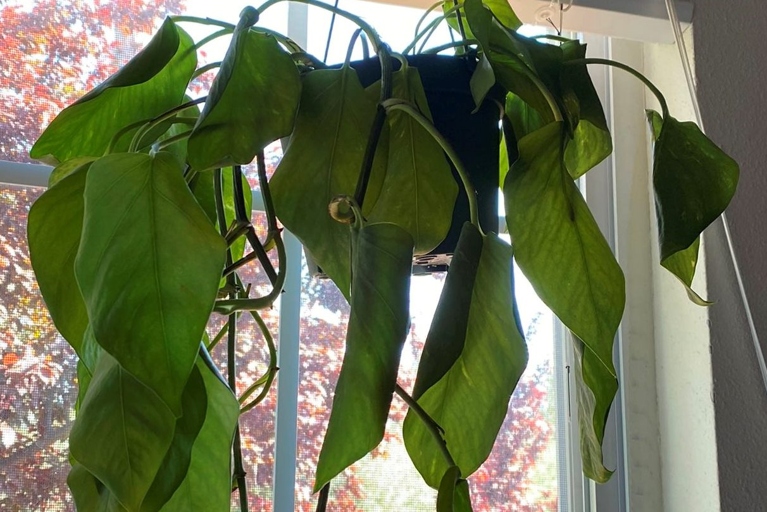
Underwatered pothos will have leaves that are wilted, dry, and yellowing. If you think your pothos is underwatered, increase the frequency of watering and make sure the pot has adequate drainage. The stems may also be drooping.
If you think your pothos is overwatered, reduce the frequency of watering and make sure the pot has adequate drainage. The stems may also be discolored or have black spots. You may also need to repot the plant in fresh, dry soil. Overwatered pothos will have leaves that are yellow and mushy.
Both underwatered and overwatered pothos can be saved with the proper care. Pay attention to the plant’s leaves and stems for clues about its watering needs, and adjust accordingly.
Common Signs of Overwatered Pothos
Pothos plants are very resilient and can bounce back from a lot of abuse, but even they have their limits. If you think you may have overwatered your pothos, here are some common signs to look out for:
The leaves of an overwatered pothos will start to yellow and droop, and the stems may become soft and mushy. You may also see brown or black spots on the leaves, and the plant may start to produce less new growth.
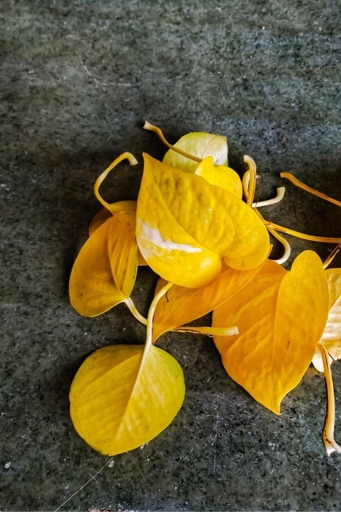
If you think you may have overwatered your pothos, the best thing to do is to let the plant dry out completely. You may also want to repot the plant in fresh, dry soil. Stop watering it and allow the soil to dry out completely before watering again.
Brown Spots on Leaves
The best way to save an overwatered pothos is to let the soil dry out completely before watering again. One of the most common problems with pothos is brown spots on the leaves. If the leaves are still brown after a few days of dry soil, you can try watering with distilled water or rainwater. This can be caused by several different things, but the most common cause is overwatering. When the leaves of your pothos turn brown, it’s a sign that the plant is not getting enough water.
Root Rot
The plant can suffer from too much water, which can cause the roots to rot. Root rot can also be caused by overwatering, which can lead to waterlogged soil. This can be a problem for pothos that are grown in pots, since they may not have good drainage. If you think your pothos has root rot, there are a few things you can do to save it. Root rot is a common problem for pothos (Devil’s Ivy).

Be careful not to damage the roots. First, you’ll need to remove the plant from its pot. Once you’ve removed the affected roots, you can replant the pothos in fresh, well-draining soil. Next, you’ll need to cut away any roots that are black or mushy. These are the parts of the plant that are most affected by root rot.
However, it’s important to act quickly. With proper care, you should be able to save your plant. If you catch root rot early, there’s a good chance you can save your pothos. Once the roots have started to rot, the plant will quickly decline. If you’re not sure whether your pothos has root rot, it’s always best to err on the side of caution and remove it from its pot.
Mold Growing on Soil
Yes, that’s right, stop watering it. Although it may look like it’s a goner, there’s still a chance you can save it. If you continue to water it, you’re just going to make things worse. The first thing you need to do is stop watering it. If you’ve overwatered your pothos (Devil’s Ivy), don’t despair.

Next, you need to check the roots. If they’re mushy and black, they’re probably beyond saving. But if they’re just slightly discolored, you may be able to save them.
Be sure to use a pot with drainage holes so that the roots don’t stay wet. The next step is to repot the plant in fresh, dry soil.
Once you’ve repotted the plant, place it in a bright, indirect light and wait. It may take a few weeks, but if you’ve done everything right, your pothos should start to recover.
Shriveled and Mushy Appearance
When a pothos is overwatered, its leaves will start to turn yellow and its stems will become mushy. To save an overwatered pothos, you will need to water it less often and allow the soil to dry out completely between watering. The plant will also start to produce less oxygen, which can lead to root rot. You may also need to repot the plant in a pot with well-draining soil.
Yellowing of Leaves
If you continue to overwater your pothos, the leaves will turn brown and die. If you think your pothos is overwatered, the first step is to stop watering it. When pothos leaves turn yellow, it’s a sign that the plant is not getting enough oxygen. If your pothos leaves are yellowing, it’s likely due to overwatering. You may also need to repot your pothos in a well-draining potting mix. Allow the soil to dry out completely before watering again. Overwatering is the leading cause of death for pothos plants. The roots of the plant are suffocating and the plant is not able to take up nutrients.
Pothos Leaves Wrinkled
If you notice that the leaves on your pothos plant are wrinkled, it’s a sign that the plant is overwatered. Once the soil is dry, you can start watering the plant again, but be sure to water it less often. The first step is to stop watering the plant and let the soil dry out completely. If the leaves are still wrinkled, you can try moving the plant to a spot with better drainage.
Wilting Pothos
If the leaves are still wilting, you can try trimming them off. If it is, try to remove some of the excess water and let the plant dry out a bit. If the soil is dry, try watering it more frequently. If you have a wilting pothos (also called Devil’s Ivy), there are a few things you can do to try to save it. First, check the soil to see if it is too wet. You can also try moving the plant to a location that gets more light.
Pothos Leaves Curling
Luckily, there are a few things you can do to save your pothos. There are a few things that can cause this problem, including overwatering, pests, and disease. Pothos leaves curling is a common problem for gardeners.
If you think you’ve overwatered your pothos, the first thing you should do is check the soil. If the soil is soggy or waterlogged, it’s time to let it dry out. Stop watering your pothos and let the soil dry out completely. Once the soil is dry, you can start watering again.

There are a few different types of insecticides that you can use. Be sure to follow the directions on the label. If pests are the problem, you’ll need to treat your pothos with an insecticide.
There are a few different types of fungicides that you can use. Be sure to follow the directions on the label. If disease is the problem, you’ll need to treat your pothos with a fungicide.
With a little care, you can save your pothos from leaves curling.
How to Save Overwatered Pothos
There are a few things you can do to save your plant. If you’ve overwatered your pothos, don’t despair!
Allow the soil to dry out completely before watering again. First, stop watering it immediately. You may need to water your plant less frequently than you’re used to.
Next, check the roots of your plant. If they’re mushy or black, they may be rotting. Cut away any affected roots with a sharp knife.
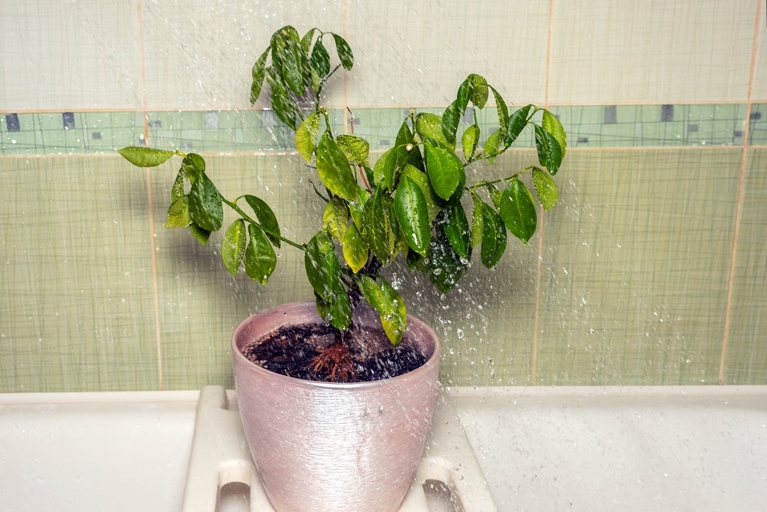
With a little time and care, your pothos will be back to its old self in no time. Place it in a bright, sunny spot and be sure to keep an eye on it. Finally, give your plant some extra TLC.
Assess the Extent of Damage
If the leaves are yellow or brown, the plant may be suffering from root rot. If the leaves are wilted, remove the plant from the pot and allow the roots to dry out. To save an overwatered pothos, it is important to act quickly. When overwatering occurs, it is important to first assess the extent of the damage. If the leaves are yellow or brown, the plant may need to be repotted with fresh, dry soil. If the leaves are wilted and the soil is soggy, the plant is probably suffering from too much water.
Drain Excess Water
First, you will need to drain the excess water. Next, gently squeeze the plant to remove any remaining water. Allow the water to drain for several minutes. If you have overwatered your pothos, don’t worry–there is a way to save it! Finally, repot the plant in fresh, dry soil. To do this, remove the plant from its pot and place it in a sink or bowl.
Withdraw Water for Several Days to Weeks
Doing this will allow the plant to dry out and recover. You can save your plant by withdrawing water for several days to weeks. If you have overwatered your pothos (Devil’s Ivy), don’t despair.
Allow the soil to dry out completely before watering again. To withdraw water from your pothos, simply stop watering it. You may need to do this for several days to weeks, depending on how overwatered your plant is.
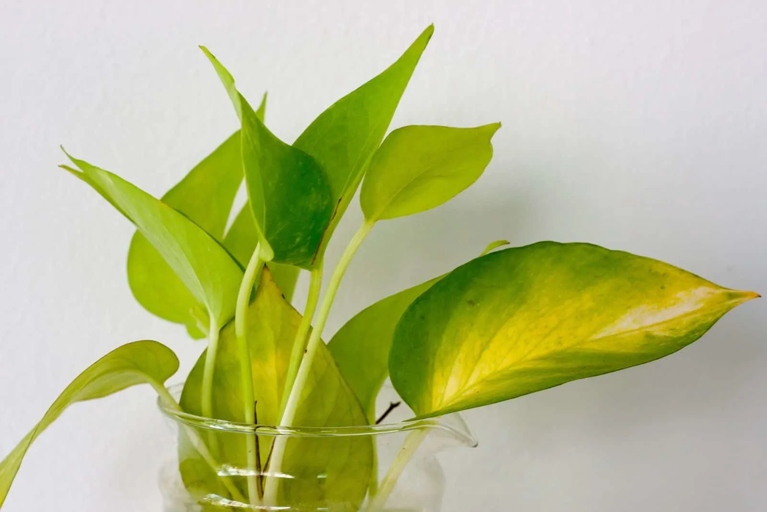
If you see that your pothos is wilting, don’t worry. This is normal and is actually a good sign. Once the plant has dried out completely, it will start to recover. It means that the plant is beginning to dry out.
Withdrawing water from your pothos is a simple way to save an overwatered plant. By allowing the plant to dry out, you give it the chance to recover and thrive.
Dig and Overturn the Soil
If the roots are still wet, they will rot and the plant will die. Dig and overturn the soil around the pothos to help the roots dry out. Be sure to water the pothos deeply and less often to avoid overwatering in the future.
Trim Off Damaged Leaves
Be sure to dispose of the damaged leaves properly so they don’t spread disease to other plants. These damaged leaves can sap the plant’s energy, so it’s important to trim them off. Use sharp, clean shears to cut off the affected leaves at the base. With proper care, your pothos should recover and start producing new, healthy leaves. If your pothos (Epipremnum aureum) is overwatered, you may notice the leaves turning yellow or brown and wilting.
Repot the Plant
If your pothos (Epipremnum aureum) is looking limp and yellow, it may be overwatered. With a little effort, you can revive your plant. Don’t despair!
If the leaves are brown and crispy, it is probably underwatered. First, assess the plant. If the leaves are wilted and the stem is soft, it is probably overwatered.
Allow the soil to dry out completely before watering again. You may also want to reduce the amount of water you give the plant in the future. If your plant is overwatered, repot it in dry soil and put it in a well-ventilated area.
If your plant is underwatered, water it thoroughly and then place it in a sunny spot. Make sure to water it regularly in the future.
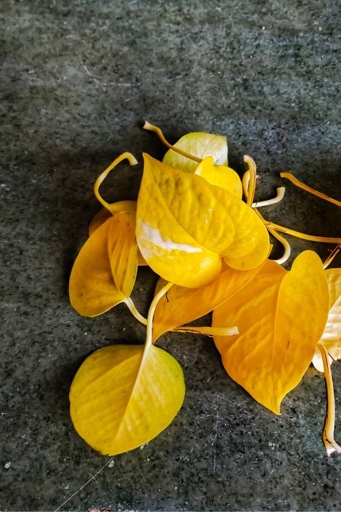
With a little TLC, your pothos will be back to its old self in no time!
How to Water Pothos Properly
Though it can tolerate some neglect, it’s important to water pothos properly to keep it healthy and looking its best. Pothos, also known as Devil’s Ivy, is a hardy and easy-to-care-for houseplant. Here are some tips on how to water pothos:
Water pothos when the top inch or so of soil is dry. Water the plant until the water runs out of the drainage holes at the bottom of the pot.

Allow the plant to drain thoroughly before putting it back in its saucer or drip tray.
Never let pothos sit in water for more than a few hours, as this can lead to root rot.
Allow the soil to dry out completely before watering again. If you think your pothos is overwatered, take a look at the leaves. If they’re wilted or yellowing, it’s a good indication that the plant needs less water.
Watering from Below or Top
Water the pothos from below, using a saucer or tray to catch excess water. If the roots are white and mushy, they have been overwatered. If your pothos is wilting, it may be overwatered. Cut off any dead or mushy roots, then replant the pothos in a pot with well-draining soil. Allow the soil to dry out completely between waterings. To save an overwatered pothos, start by removing it from the pot and examining the roots.
Watering from Below
Fill a sink or basin with lukewarm water and submerge the pot. Let it sit for 15-20 minutes, then drain any excess water. To save your plant, start by watering it from below. If your pothos is wilting, it may be overwatered. Watering from below will help to saturate the roots and prevent the leaves from wilting.
Watering from Top
One of the first things to do is to stop watering from the top. There are a few things you can do to save your plant. Watering from the top can cause the leaves to rot, so it’s best to water from the bottom. If you have an overwatered pothos, don’t despair! To do this, simply place your pothos in a sink or basin and fill with water until the roots are submerged. Let the plant soak for 15-30 minutes, then drain the water and allow the plant to dry out completely before watering again.
You may also want to remove any leaves that are mushy or have black spots. Cut off any leaves that are yellowing, browning, or wilting. If your pothos is already showing signs of leaf rot, you can try to remove the affected leaves. Once you’ve removed the affected leaves, allow the plant to dry out completely before watering again.
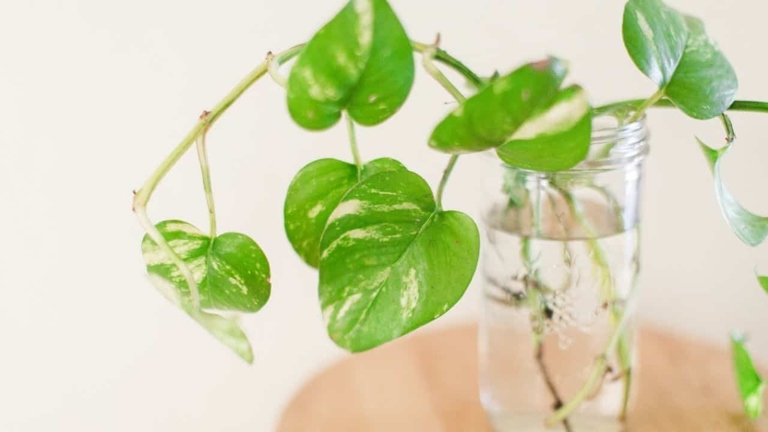
Be sure to use a well-draining potting mix and a pot that is slightly larger than the current one. If your pothos is still struggling, you can try repotting it. Water the plant thoroughly, then allow it to dry out completely before watering again.
With a little care, your overwatered pothos can be saved!
Watering Frequency
Pothos, or Devil’s Ivy, is a houseplant that is known for its easy care. However, overwatering is a common problem with pothos. If you think you have overwatered your pothos, there are a few things you can do to save it. Overwatering can cause the leaves to turn yellow and the plant to become limp.
First, stop watering the plant and allow the soil to dry out completely. Then, remove any yellow or dead leaves. Be sure to water only when the soil is dry to the touch. Once the soil is dry and the plant is trimmed, you can start watering again.

If your pothos is still not looking its best, you may need to repot it. Repotting will help the plant to recover from overwatering and will give it a fresh start. Be sure to use a well-draining potting mix and a pot with drainage holes.
Water Quality
Water quality is one of the most important factors in keeping your pothos healthy. If you can’t use filtered water, let the tap water sit for 24 hours before using it to allow the chemicals to dissipate. Pothos are very sensitive to chemicals and pollutants in the water, so it’s important to use filtered or distilled water whenever possible.
Pothos are also sensitive to temperature, so the water should be at room temperature or slightly warmer. Avoid using cold water, as this can shock the plant and cause the leaves to turn brown.

These kits are available at most hardware stores and will test for things like pH, chlorine, and hardness. If you suspect that your water quality is poor, you can test it with a water quality test kit.
Amount of Water
This plant is very tolerant of drought and can even survive if you forget to water it for a week or two. When it comes to watering your pothos, less is more. However, if you overwater your pothos, the leaves will start to yellow and the plant will eventually die.

If you think your pothos is overwatered, the first thing you should do is stop watering it. You may also want to consider repotting your plant into a pot with drainage holes to help prevent overwatering in the future. Allow the soil to dry out completely before giving it a drink.
Timing of Application
When it comes to overwatering your pothos, timing is everything. The best time to water your pothos is in the morning, giving the plant time to absorb the water before the sun evaporates it. If you water your plant too early in the day, the water will evaporate before it has a chance to reach the roots. Water your plant too late in the day and the water will sit on the leaves overnight, promoting fungal growth.
Common Mistakes in Watering Pothos
Here are some common mistakes people make when watering pothos: If your pothos is wilting, yellowing, or drooping, it’s likely overwatered.
Watering too often 1.
Watering too often will cause the roots to rot, leading to a wilting plant. Pothos like to dry out between waterings, so only water when the soil is dry to the touch.
Not draining excess water 2.
Allowing the plant to sit in water will cause the roots to rot. If you water your pothos and see water sitting in the saucer below the pot, be sure to drain it out.
Not using a well-draining pot 3.
Pothos need a pot with good drainage to avoid overwatering. Be sure to use a pot with holes in the bottom, and don’t forget to put a layer of rocks or gravel in the bottom of the pot to help with drainage.
4. Watering with cold water

Cold water can shock the plant and cause the leaves to yellow and drop off. Pothos like room temperature water, so avoid using water straight from the tap.
Why is my pothos drooping?
The first step is to check the soil. If it’s dry, water your pothos immediately. If the soil is moist, wait a few days to see if the drooping subsides. If your pothos is drooping, it’s likely a sign that it’s not getting enough water. If it doesn’t, you may need to repot your pothos in fresh, well-draining soil. Pothos are a hardy plant, but even they can suffer from overwatering.
Do pothos like to be misted?
But before you do, you may be wondering: do pothos like to be misted? Pothos plants are known for being tough and easy to care for, but even these plants can suffer from overwatering. If your pothos is looking wilted and sad, it may be time to give it a break from the water.
Pothos plants enjoy high humidity, so misting them can help to increase the moisture in the air around them. The answer is yes and no. However, too much misting can actually cause the leaves of the pothos to rot, so it’s important to find a balance.
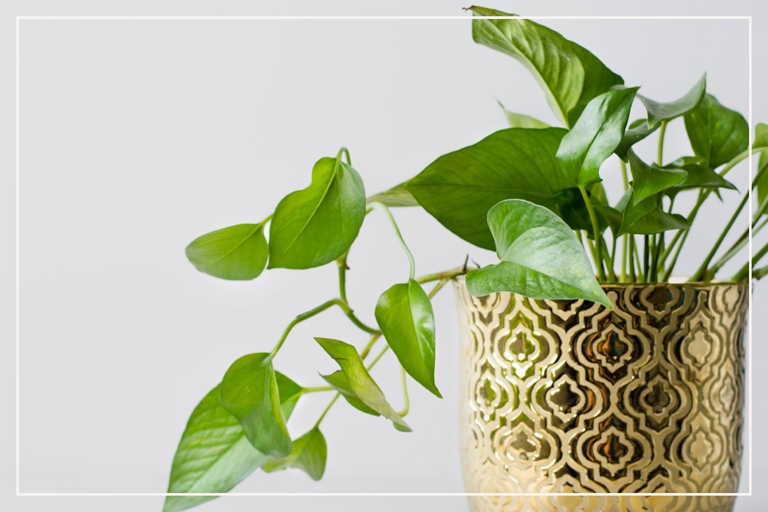
And be sure to only mist the leaves, not the soil, to avoid overwatering. With a little care, your pothos should be back to its healthy self in no time. If you think your pothos could use a misting, try doing it in the morning so the leaves have time to dry before nightfall.
How do I know if my pothos has root rot?
If you think your pothos has root rot, the first thing you should do is check the roots. If they’re mushy or black, it’s likely that the plant has root rot. If the plant is still alive, you can try to save it by trimming off the affected roots and replanting in fresh soil. If the plant is already dead, there’s no hope.
Frequently Asked Questions
1. How do I know if my pothos is overwatered?
The leaves of an overwatered pothos will be wilted and yellow, and the stem may be soft or mushy.
2. What should I do if I think my pothos is overwatered?
If you think your pothos is overwatered, the first step is to stop watering it. Allow the soil to dry out completely, and then water your pothos only when the soil is dry to the touch.
3. How can I prevent my pothos from being overwatered?
To prevent your pothos from being overwatered, water it only when the soil is dry to the touch. Be sure to use a well-draining pot and soil, and do not allow the pot to sit in water.
4. What are the consequences of overwatering my pothos?
Overwatering your pothos can lead to root rot, which can kill your plant.
5. My pothos was overwatered. Is there any hope for it?
If your pothos was overwatered, the best course of action is to stop watering it and allow the soil to dry out completely. If the roots are still alive, your pothos may recover.
Final thoughts
If your pothos is looking limp and yellow, it’s probably overwatered. But don’t despair, there are a few things you can do to save your plant. First, check the soil to see if it’s soggy. If it is, let the plant dry out for a few days. If the soil is dry, water the plant less frequently. You can also try repotting your pothos in a well-draining potting mix. With a little care, your pothos will be looking green and healthy in no time.
